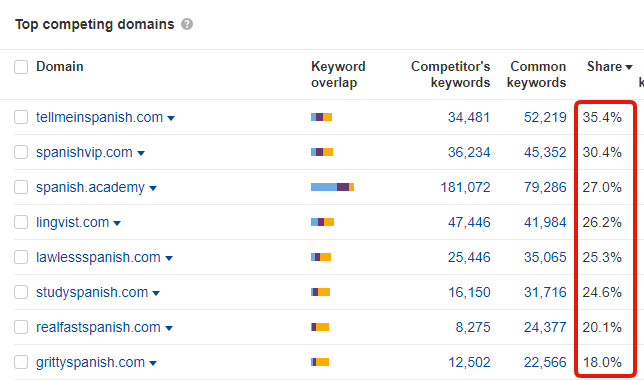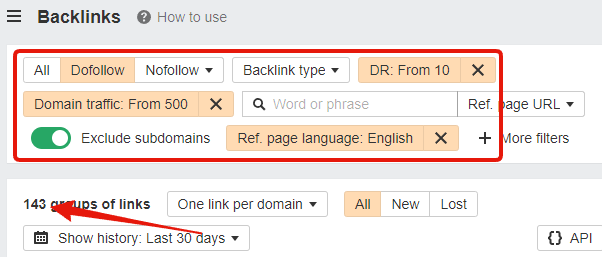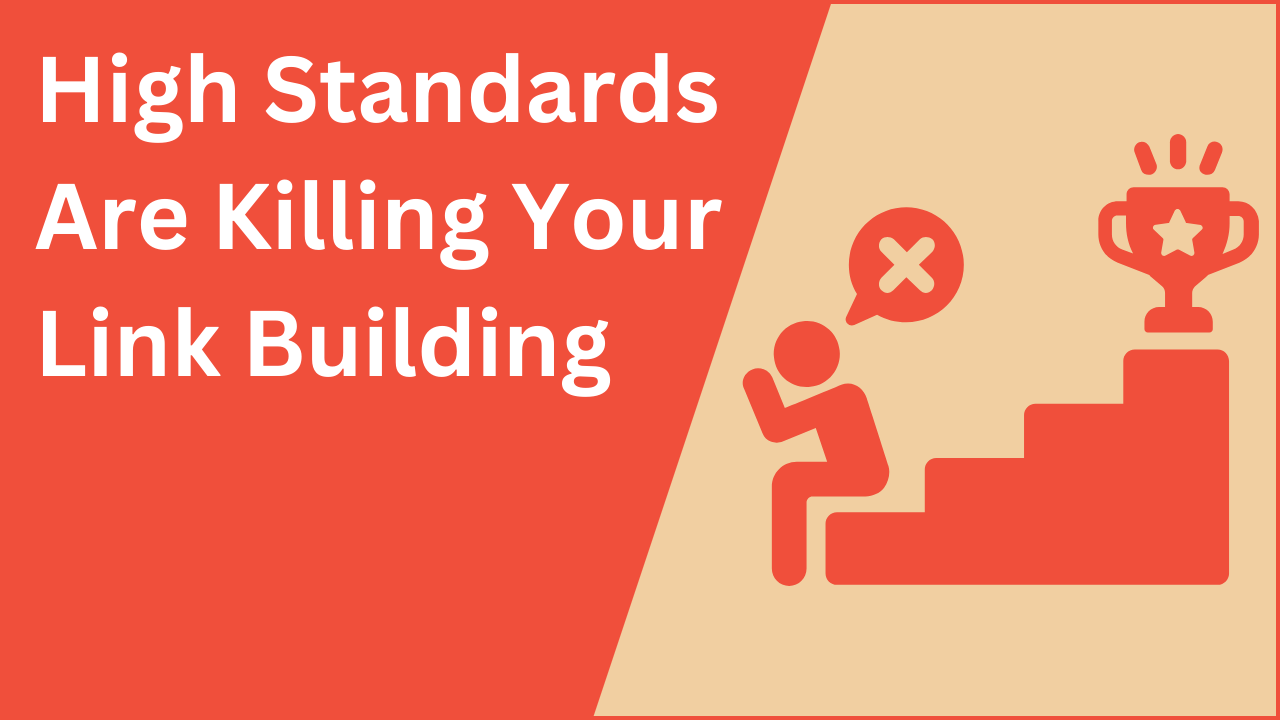A link building strategy should be based on your competitors.
The Google algorithm is currently calculating that they should rank higher than you.
So your plan to beat them is pretty easy:
- Choose the right competitors
- Reverse-engineer their strategy
- Create & execute your winning strategy
- Outrank competitors & profit
Let’s get to it, shall we?
Step 1: Choose the right competitors
If you’ve been a good boy or girl and done your keyword research, you’ll probably know which keywords you’re targeting.
The “right” competitors to reverse-engineer are those who currently rank for those keywords.
Bang those keywords into Google and find ‘em.
Or, if you’re already ranking decently, use a tool like Ahrefs organic competitors report to see which websites rank for the same keywords as you (listed by % of overlap):

If you’ve got a bunch over 20%, they’re usually solid picks.
You should also pick websites that have a similar scope as you.
If you sell camping gear with ecommerce, you should pick other camping ecommerce stores and not something like Dick’s Sporting Goods.
Or if you’re a roofer in Dallas, pick other roofers in Dallas and not a national provider with 100 franchises.
You get the idea.
Once you’ve got 5-10 competitors, we’re ready to move on.
Step 2: Reverse-engineer their strategy
Honestly I just said “reverse-engineer” because it makes me feel cool.
In reality this is very simple… We’ll count how many links they have, and then build more.
Remember: The algorithm is telling us how many links are needed to compete in your niche.
If all competitors have 50-100 links, then we’ll build 120, or whatever.
A tool like Ahrefs can tell us how many links each competitor has:

But this “raw” count includes a bunch of spammy links that Google probably ignores.
Which means they don’t influence the algorithm, and are therefore useless for our ultra-advanced analysis.
You can just apply a few filters to get the list closer to links that do impact the algorithm:

This will usually trim the list to 5-10% of the “raw” version.
Just grab a link count for each of your competitors and then we can get to the fun part.
Step 3: Create & execute your winning strategy
I lied, this part isn’t fun.
It’s actually the frustrating, tedious, monotonous part where you have to actually start building the links.
Creating the strategy is simple: Aim to build 10%+ more links than your competitors.
Whether you’re doing it yourself or using an agency, just aim for this number.
Ehm… Not really sure what else to say here. That’s it.
Step 4: Outrank your competitors & profit
Alright now this is the fun part.
Aaah, the spoils of war! (Said the SEO nerd who only wages wars via keyboard).
This is a solid plan for the link building part of your SEO, but there’s a few other elements you gotta get right too.
You gotta nail the rest of your SEO
You need good content, topical authority, on-site optimisation, and blah blah blah.
That’s outside the scope of this article (and my expertise).
Point is: If you don’t nail that stuff too, then your link building plan will fail.
All these elements come together to create a successful SEO strategy.
This ain’t precise.
It’s impossible to precisely predict what will happen with the Google algorithm.
That also applies to these link building projections.
You might beat your competitors with half as many links as you thought, or it might take more than you thought.
It’s pointless to try being super precise, because as I said, it’s impossible anyway.
So this is just to get you generally in the right direction (e.g do you need 100 links or 500 links).
Take whatever number of links you need and plan to build them over 6-12+ months.
That’ll be a nice steady pace, and let you re-assess the plan as you go along.
For example if you’re already beating your competitors at the halfway point, perhaps you can slow down. Or perhaps speed up if you’re seeing zero progress.
Want free competitor analysis for your website?
The process described here is how we build strategies for our clients.
What’s even cooler is we also graph it out:

So you can see exactly how you compare to your competitors right now, and how it develops over time.
To get your competitor analysis: Just fill out this form on our home page, and mention you want the free competitor analysis.
No worries if you’re a bit unsure of choosing the right competitors, we’ll double-check it for you to make sure it’s solid.







